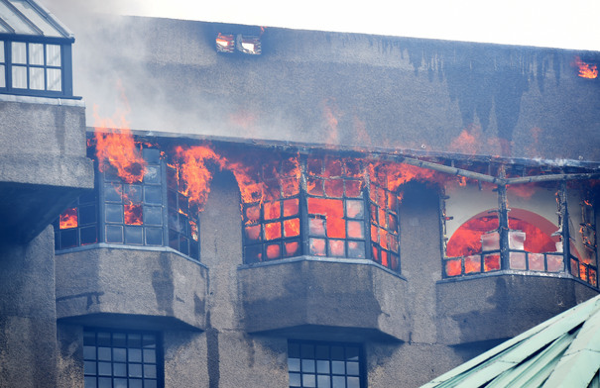Art World
Origin of the Glasgow School of Art Fire Revealed

Photo via: STV News

by
Lorena Muñoz-Alonso

The investigation undertaken to establish what caused the major fire at Glasgow School of Art’s Mackintosh building last May (see “Glasgow School of Art Goes Up in Flames”) has determined that flammable gases from a canister of expanding foam were to blame, the BBC reports.
The Scottish Fire and Rescue Service’s report states that the gases ignited when they came into contact with a video projector in Studio 19.
A student was producing an installation there, made from chipboard and wood. Three walls of the studio had high expansion foam panels attached to them. The remaining blank wall was being used a projection screen.
According to the report, at the time of the incident, gaps between the foam panels were being filled with expanding foam. The fire started when the flammable gases from the foam canister came into contact with the video projector’s cooling fan.
Once ignited, the flame consumed the plastic components of the projector, and then the foam on the wall behind it, which made the fire grow rapidly. The identity of the student using the studio has not been disclosed.
The report said that the unique features of the building allowed the fire to spread quickly to neighboring studios and upwards, consuming the Mackintosh library, considered an Art Nouveau masterpiece.
An improved fire protection system was being installed at the time of the incident but it was not operational, the report said.
Tom Inns, director of the school, has described the fire as a “horrible accident.”